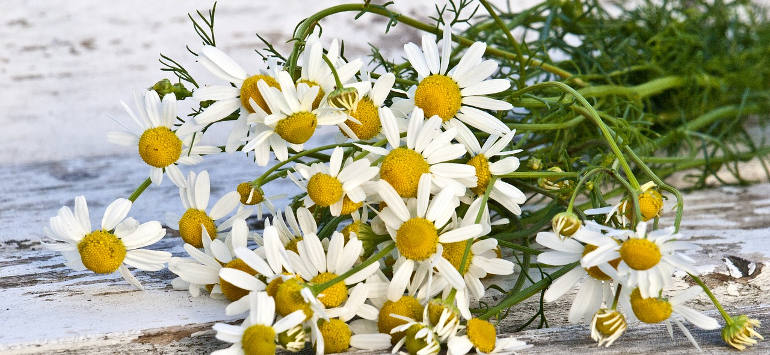
There are many great flavours that can be borrowed from the wild. The habit of using edible wild plants dates back thousands of years. Adding wild plants to your food can be a nice way to enhance it with new textures and colours—wild edibles are used in salads, as a garnish for desserts or as decoration for starters, appetisers, cakes and many other dishes.
Various edible wildflowers can be incorporated creatively into homemade lollipops, ice creams, gelatin desserts, and floral syrups. Depending on the plant, the flavour palate can be richer and much more delicious.
The perks of wild plant foraging are innumerable. You can go out with a basket and gather a great heap of fresh and healthy in-season plants. And the best thing is that they are absolutely free. Besides, their nutritional content is higher in comparison to store-bought plants. They are literally full of beneficial substances that are good for your health. It is estimated that people who consume naturally grown wild plants digest the food more easily.
The great impulse for this increased interest in wild edibles is also caused by our need for a deeper connection to nature. It’s incredible to see your food in its natural environment before you eat it. This is a powerful way to build strong relationships with wild edible plants. Shortening the distance between man and nature brings great meaning to life. It’s essential that we foster our connection with nature and this is definitely one of the greatest things we can do for ourselves.
We challenge you to take a look at our list of five edible wild plants and try to find them. They are easy to harvest and incorporate into your diet, giving your food a fresh and exquisite taste.
Table of Contents
Angelica

The herb Angelica is a real treasure of nature, prized for centuries for its high nutrient value. The entire plant is edible and its root, seeds, leaves, flowers and stem can be added to all sorts of dishes. Every part of the plant can be used for medicinal purposes as well.
Identifying and harvesting Angelica
Angelica is easily recognizable by its lacy white flowers that grow in bunches. They have a bitter-sweet flavour with a pungent musky scent and their colour can vary from yellowish to greenish. The stem reaches six feet in height and it’s hollow from the inside.
The serrated leaves are divided into several sections. You can find the herb in semi-shady locations with continuous running water and damp soil. The stems are harvested between April and May; the leaves between May and June while the roots are gathered in late fall.
How to eat Angelica
Add Angelica’s tender leaves to salads or use them as a garnish for meat. When boiled they are similar to spinach. You can dry the leaves and use them as a flavouring for squash, pumpkin, or potato or prepare with them aromatic teas. The bitterish seeds are used to flavour cakes, candies, liqueurs and other beverages. Prepare Candied Angelica from the boiled stems or just blanch them and use them as a garnish for baked fish.
Benefits of eating Angelica
Angelica is also used as a herbal remedy to stimulate the secretion of digestive juices, which facilitates food absorption. It has the added benefit of detoxing your body and helps in keeping diseases at bay. Thanks to its high vitamin content, angelica is recommended for the treatment of various skin problems.
Chickweed
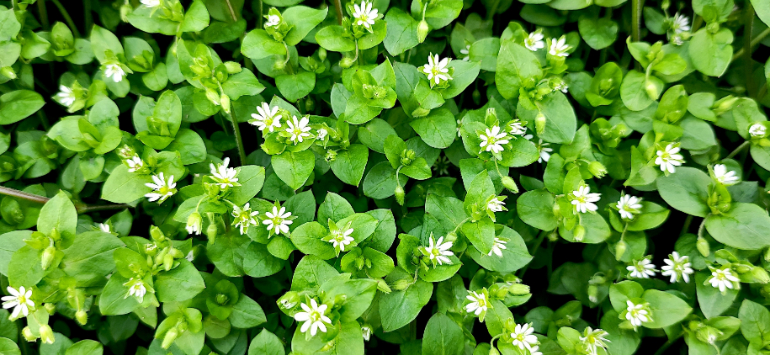
Chickweed is a common wild edible weed, regarded as one of nature’s top superfoods. This low-growing annual with numerous healing properties has been used for centuries for medicinal purposes.
Identifying and harvesting Chickweed
This low-growing green annual has white, star-shaped flowers and succulent, egg-shaped leaves. Flowers begin to bloom in March and continue till late autumn. The seeds are stored in capsules that stay closed in wet weather. In cool conditions, Chickweed forms dense mats and can thrive all year long. It is a common weed in fields, coastal locations, meadows and foothills. Collect the whole plant between May and July, cook it straightaway or dry it.
How to eat Chickweed
The entire plant can be consumed and it is used both fresh and dried. It has a nice fresh taste that resembles the flavour of cornsilk. Chickweed leaves can be eaten raw in a salad. When boiled, the young leaves look like spinach. The stems can be steamed or blended into a delicious green smoothie. Both leaves and stems go well in soups or egg dishes.
They can be used as substitutes for spinach and lettuce. Even the tiny blossoms and seeds can be sprinkled on salads or turned into a decoration for cupcakes, cookies and candy.
Benefits of eating Chickweed
Chickweed is a healthy vitamin bomb, high in potassium, calcium, iron, selenium, antioxidants and beta-carotene. It is used in the treatment of skin problems, blood disorders, and obesity. Chickweed stimulates the metabolism and the digestive system, accelerating weight loss naturally. Its infusion removes toxins from the body and boosts vital energy.
Wild Bergamot
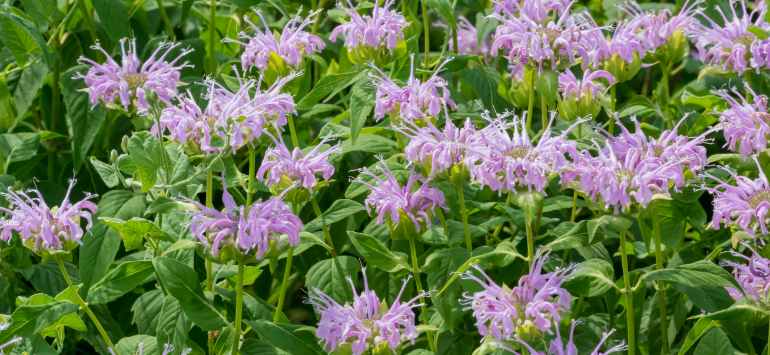
Wild bergamot’s foliage has a characteristic aroma that attracts butterflies, bees and hummingbirds. This lovely violet edible plant is often cited for its historical medicinal applications. Apart from being a wonderful addition to salads, its leaves have been used as natural insect repellents.
Identifying and harvesting Wild Bergamot
Its height ranges from 11 to 27 inches and the colour of its blossoms ranges from purple to pink. The most distinctive part of this perennial plant is its aromatic foliage. Wild bergamot leaves are up to 4 inches long and usually, they are coarsely toothed and hairy underneath. Its tubular flowers grow in dense heads and they have long summer bloom periods.
It grows in moist to moderately dry locations, as well as at moderate mountain elevations. Harvest leaves and flowers between June and July, when they are in bloom.
How to eat Wild Bergamot
The whole plant that is above the ground is edible. It’s used as a garnish in salads, for flavouring meats and cooked foods. Wild bergamot tastes like citrus fruit. Its flowers, more specifically, have a minty flavour. The blossoms can be successfully used as a substitute for oregano. The fresh or dried leaves can be used as a refreshing tea. They can be mixed with basil and turned into a delicious pesto. Both leaves and flower petals can be used in regular and fruit salads.
Benefits of eating Wild Bergamot
Wild bergamot is commonly brewed into an aromatic medicinal tea to cure colds. It’s a natural source of the powerful antiseptic thymol. Thanks to its antiseptic and antibacterial action, it reduces the pain and inflammation of mouth and throat sores caused by caries and gingivitis. Wild bergamot successfully treats digestive disorders. Besides, its oil is high in antioxidants that keep cells healthy and youthful.
Wild Violets
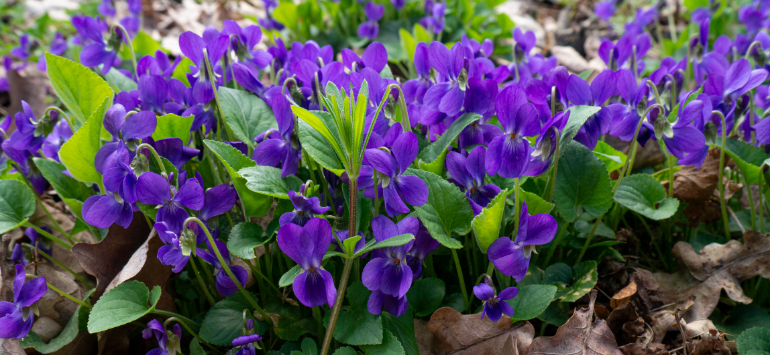
Wild violets are often regarded as a weed; however, they should be viewed as useful plants that you can eat. They can turn into an effective decoration for homemade desserts, salads and dishes.
Identifying and harvesting Wild Violets
Wild violets grow in clumps, reaching a height of 4 to 6 inches. They have heart-shaped leaves and delicate flowers that appear in various shades of purple and white. They are most commonly found in places with partial sun or partial shade, such as wooded areas and lawns. Wild violets can be collected from May to June.
How to eat Wild Violets
Its petals are most often used for garnishing and crystallizing and they have a pleasant sweet flavour. Wild Violets are used in salads, to decorate cakes, sandwiches, soups, desserts or drinks.
To add a festive touch to beverages, freeze them inside ice cubes. Violet flowers are a great addition to syrups, vinegar, tea, and jellies, or surprise your children with beautiful candied violets. Put violet leaves in your spring salad or cook them.
Benefits of eating Wild Violets
Wild violets are a wonderful source of vitamins A and C. They strengthen the immune system and are known to have antiseptic properties. Violets reduce inflammation and soothe sore throats, sinus infections and colds. These medicinal properties are attributed to the salicylic acid, which is contained in the flowers. Salicylic acid is the active ingredient of aspirin and it’s also used to treat many skin disorders.
Yarrow
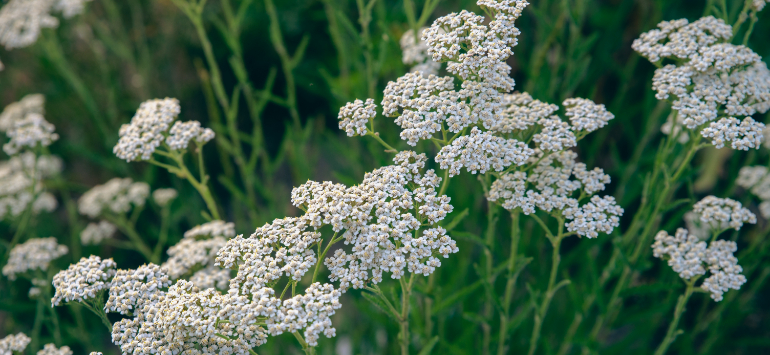
Yarrow is a perennial herb with versatile applications. Besides being a go-to herb for children, yarrow has culinary and ornamental uses.
Identifying and harvesting Yarrow
When in bloom it can easily be recognized by its small clusters of white flowers and its long, feathery foliage. It’s a hardy plant that grows in a range of habitats. Yarrow prefers temperate climates and it’s often encountered in pastures, hedgerows, and grassy places.
Harvest the flower heads from July to September, when they are in full bloom. Collect the leaves in the spring while they are still fresh and young. For magical use, harvest the herb on Midsummer’s Day.
How to eat Yarrow
Both leaves and flowering tops can be used in the kitchen. The young leaves and flowers can be added to salads, desserts, stews and soups. The fresh herb is used in tea infusions and juices. Yarrow has a sweet, slightly bitter taste. Only the young leaves can be eaten raw.
Benefits of eating Yarrow
Yarrow contains many chemicals with anti-inflammatory effects. Volatile oil and salicylic acid soothe fever, common cold and different kinds of injuries. The fresh leaves can be chewed in order to relieve toothache.
Hedge Garlic
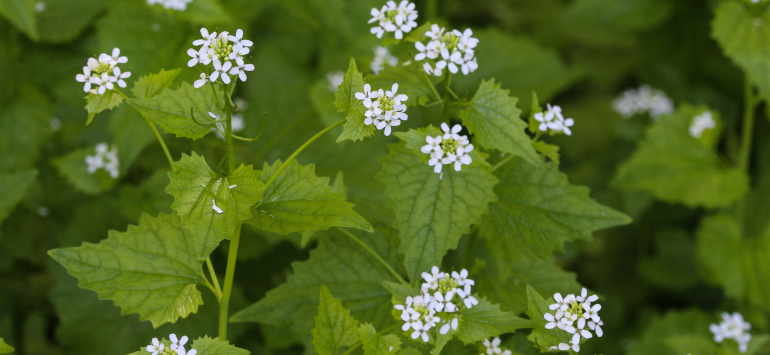
Preferring shaded areas in woodlands and hedgerows, Hedge garlic can attain considerable height. Its petite white flowers, as the name suggests, emit a slight garlic scent.
Identifying and harvesting Hedge Garlic
Hedge garlic follows a biennial growth pattern, whereby in its initial year, it forms a small rosette of broad heart-shaped leaves at ground level. During the second year of growth, it produces a vertical flower stem that can reach up to one and a half metres in height, emerging from the leaf rosette and bearing flowers at its top which eventually develop into seed pods. The thin, green, and erect seed pods begin to appear from the centre of the flowers. It typically grows in woodland, shady scrub, and path edges.
For harvesting, the young leaves from the first year’s growth or the top part of the plant in its second year are the best, along with the flowers and flower buds. At the end of the second year’s growth, the roots become edible and are ready for harvesting.
How to eat Hedge Garlic
The flowers and flower buds of the hedge garlic lend an appealing taste and visual appeal to salads, while its seeds can be employed as a mustard substitute. The roots, which resemble mild horseradish, have a garlicky flavour with mustard traces. Opinions on this plant are divided, as some find it unpleasant, while others relish it. Similarly, when we take foraging groups out, it’s a contentious ingredient. However, with the right dressing, nobody seems to object to its inclusion in salads.
Benefits of eating Hedge Garlic
Hedge garlic greens offer excellent nutritional value, as they are rich in vitamins A, C, E, and several B vitamins. Furthermore, this wild plant also contains significant amounts of potassium, calcium, magnesium, selenium, copper, iron, and manganese, along with omega-3 fatty acids.
Bistort
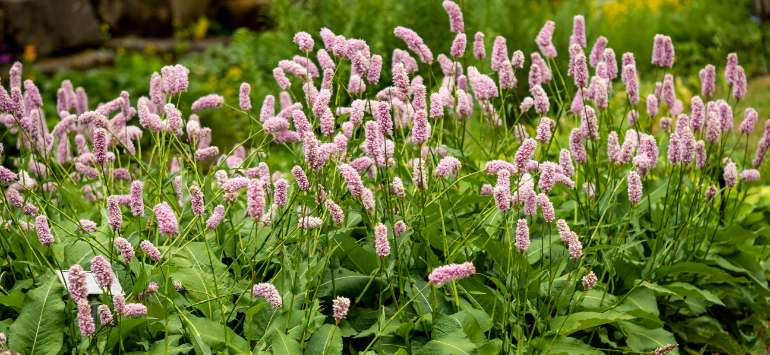
The delicate pink flowers of Common Bistort can be found in wet meadows, pastures, and roadside verges. This plant is also known as ‘Pudding Dock’ in North England, as it was used to make Easter desserts.
Identifying and harvesting Bistort
Resembling dock leaves, the basal leaves of this plant feature a slender strip of leaf material or “wings” running along the length of the leaf stem or petiole. Its pink bottlebrush-like flowers, which bloom in June and July, are held aloft by thin stems that rise above the surrounding foliage, adding to the plant’s charm. Known by various names, such as Pink Poker, this attractive plant thrives in damp locations.
In spring, it is possible to collect young shoots and leaves, while in autumn, the plant’s rhizomes can be gathered.
How to eat Bistort
The young shoots and leaves are versatile ingredients that can be added to salads, sandwiches, or cooked as greens. Similarly, the plant’s rhizomes can serve as a starchy root vegetable and can be prepared in a similar manner to potatoes.
Benefits of eating Bistort
Bistort contains chemicals called tannins that can help improve diarrhoea and mouth and throat irritation by reducing swelling (inflammation). Also, the plant is rich in vitamin C.
Trailing Bellflower
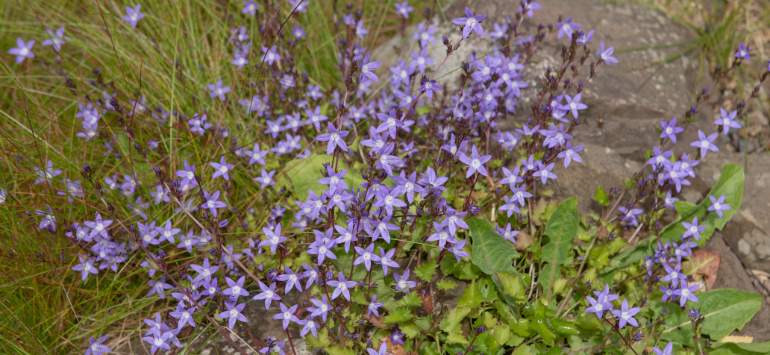
The plant we now refer to as Trailing Bellflower has a relatively recent history in the UK. It was introduced in 1931 and subsequently recorded in the wild in 1957. Despite its recent arrival, Trailing Bellflower has since adapted and spread throughout the region, making it a notable addition to the local flora and an amazing edible flower.
Identifying and harvesting Trailing Bellflower
The plant features heart-shaped leaves that can also appear oval or rounded, and have serrated edges. Its blooms are a striking violet-blue, boasting five petals that transform from bell-shaped in their early stages to star-like upon opening. This species is commonly found in rock gardens and can often be seen self-seeding along walls, rocky banks, and pavements.
Between May and December, this plant’s flowers are typically harvested. However, given that it grows in pavement cracks and along walls, a forager may wish to exercise caution and avoid areas where dogs may have urinated, instead opting to select parts of the plant growing higher up on the wall.
How to eat Trailing Bellflower
This edible plant’s primary characteristic is the visual beauty of its flowers. While the flowers themselves are almost tasteless, they make a wonderful garnish for a wide range of dishes, including salads, cakes, and puddings. In addition, the leaves possess a mild flavour with a slightly refreshing quality and can be consumed raw in salads or eaten as a type of green.
Benefits of eating Trailing Bellflower
Historically, balloon flowers have exhibited the potential to protect against different types of liver parasites, enhancing the liver’s effectiveness and promoting overall metabolic health. Furthermore, the plant’s anti-inflammatory properties can help alleviate sore throats and reduce the likelihood of respiratory conditions such as bronchitis.
Lady’s Smock

As a true harbinger of spring, the Lady’s Smock flower also known as the Cuckoo Flower blooms from April onwards. Keep an eye out for its dainty, pale pink blossoms in damp meadows, ditches, and along riverbanks.
Identifying and harvesting Lady’s Smock
This features pinnate, compound leaves arranged opposite each other on a stem with a terminal leaf at the end. When growing from the flower stem, the leaves are thin. The basal leaves, which are still compound, are much rounder than the flower stem leaves and can be found year-round. At the top of the flower stem, there is a stunning crown of very pale pink/purple or sometimes white cruciform flowers. These flowers have four petals forming a cross shape. These flowers droop and close at night or during heavy rain.
This edible plant can be found in the UK in various habitats, including fields, meadows, pastures, lawns, riversides, damp ditches, and roadsides. The basal leaves are typically available year-round, and before flowering, they can be harvested in substantial numbers.
How to eat Lady’s Smock
While the leaves and flowers can be used to create salads, they carry a potent and fiery flavour reminiscent of mustard or wasabi. Moreover, they make an excellent addition to tea and tonics.
Benefits of eating Lady’s Smock
Lady’s Smock contains various chemical compounds, such as glucosinolates, flavonoids, phenolic acids, fatty acids, amino acids, and other trace minerals. These compounds exhibit a broad spectrum of activities, including antibacterial, antidiabetic, antifungal, anti-infective, antiviral, and antioxidant properties.
Traditionally, a tea prepared using the leaves of this plant was used as a spring tonic to alleviate menstrual disorders, particularly heavy periods.
Wild Carrot

Wild carrot has a distinctive aroma that resembles its domesticated counterpart. However, unlike its cultivated cousin that graces our dinner plates, Wild Carrot roots are not quite as palatable. If you’re hoping to spot this species, head to chalk grasslands and coastal regions where it can often be found.
Identifying and harvesting Wild Carrot
Wild Carrots’ pinnate leaves are generally less triangular than other fern-leaved umbellifers. The plant features an umbel of white to off-white to pink flowers with five petals, and typically one to five small flowers in the centre of the umbel that are dark red to nearly black in colour. Wild Carrot roots are carrot-shaped, although they can become forked, twisted, woody, and fibrous depending on the soil, stones, and growing environment.
It is advisable to harvest Wild Carrot when it is in flower to avoid confusion with Hemlock, which has a similar appearance.
How to eat Wild Carrot
Wild Carrot flowers can be consumed raw or battered and deep-fried, while their leaves make a great addition to salads. Its seeds are ideal for use in breads, soups, and stews.
Although the carrot itself carries a robust flavour, it is tough and stringy, hence better cooked in soups or stews and then removed before consumption. The roots from the first year’s growth are relatively less tough than the older ones, but still quite fibrous.
Benefits of eating Wild Carrot
Wild carrots are commonly known for their purported benefits to the eyes. However, this claim holds mainly in developing countries where people may have a vitamin A deficiency that can lead to severe eye problems, including blindness. Carrots are rich in beta-carotene, which the body utilises to produce vitamin A. The same applies to carrot greens.
Aside from their role in vitamin A production, both carrot roots and greens are abundant sources of several essential vitamins and minerals, including calcium and iron.
Need a professional gardener?
Enter your postcode to view our rates and availability in your area.
For questions about the services we offer visit our main site

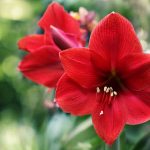


This web page are very good for edible plants and flowers of UK. Thank you very much.
Quynh Nguyen